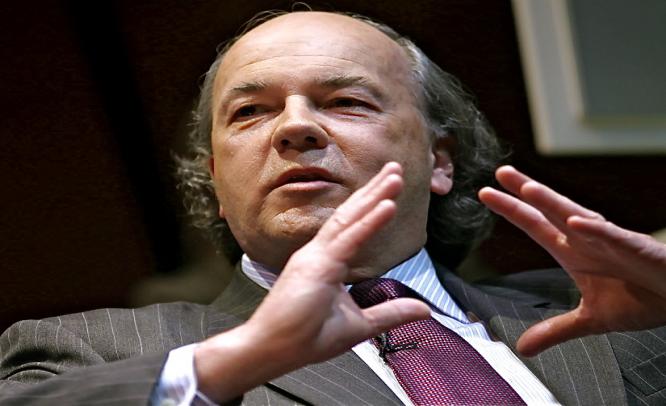American economist James Rickards says collapse of the debt and property bubble there could well be the catalyst for a global economic crisis
Suparna Goswami Bhattacharya
November 7, 2014: James Rickards, American lawyer, economist, investment banker and author of books of like Currency Wars and Death of Money, is one of the speakers at the ICA Conference in Dubai. He discussed factors that could lead to collapse of the International monetary system with IFM. Excerpts:
You have said that the collapse of the International monetary system does not really mean end of the world. One has to devise new rules. What exactly do you mean by new rules?
The international monetary system has collapsed three times in the past 100 years — in 1914, 1939 and 1971. Each collapse was followed by a new system devised by the leading trading and financial powers of the time. These new “rules of the game” are arrived at in one or more international monetary conference. Famous examples include the Genoa Conference of 1922, the Bretton Woods Conference of 1944, and the Smithsonian Agreement of 1971, but there have been many others. A new international conference today would probably include the US, EU, Japan, China and Russia as its major players. It would likely be held under the auspices of the G-20 and the IMF. Other important participants would include Brazil, India, Saudi Arabia and the UK. Possible bases for a new international monetary system include the current form of world money, the special drawing right (or SDR), and possibly some role for gold.
I understand it would be difficult to predict, but when do you believe the collapse will happen?
Using the science of complexity as a theoretical model for understanding the potential for collapse in the monetary system indicates that the collapse could come at any time. In all likelihood, the actual date is probably still a few years away. But because it could happen at any time, investors should begin making preparations now, including holding some physical gold, cash, land, fine art and other non-digital assets that will preserve wealth and cannot easily be destroyed or confiscated by digital means.
What according to you are the reasons behind the collapse?
The main source of instability is excessive debt combined with persistent deflation that increases the real value of that debt. The debt comes from sovereign deficits, and the deflation is a natural consequence of the global depression that began in 2007. Other sources of risk are the over-concentration of bank assets in fewer hands, the enormous expansion in the gross notional value of derivatives, and the density function resulting from the interconnectedness of major financial institutions, markets and exchanges.
Given China’s rising debt, do you think the collapse might get triggered from there? Or, is the debt problem just a hype?
The debt problem in China is not hype. The collapse of the debt and property bubble there could well be the catalyst for a global economic crisis. About 45% of Chinese GDP is infrastructure investment and a substantial portion of that is wasted on non-revenue generating and unneeded projects and financed with unpayable debt. This debt is funded in part through wealth management products (WMPs), which are like high-yield junk CDOs. This WMP bubble is in addition to the general residential property bubble that has been financed with regular mortgage products. Another source of debt is off-balance-sheet provincial government obligations. China is the greatest debt bubble in history and it will unwind with adverse and unpredictable consequences for global capital markets.
Retail investors also face a major setback. What advice do you have for them?
Investors should allocate their portfolios in approximately these portions: gold 10%, land 10%, fine art 10%, cash 30%, government bonds 10%. Alternatives such as hedge funds, private equity and venture capital 30%. This portfolio is robust enough to handle inflation and deflation. The cash component reduces volatility, hedges against possible deflation and offers embedded optionality to pivot to another asset class as visibility improves.
Do you think such scenarios make people more optimistic about crypto currencies like Bitcoins?
I see the rise of crypto-currencies as a sign of waning confidence in traditional currencies, such as the dollar. I expect the trend towards alternative currencies, such as Bitcoin, to grow as central banks continue to fail in their efforts to manipulate asset values.
Also read:


